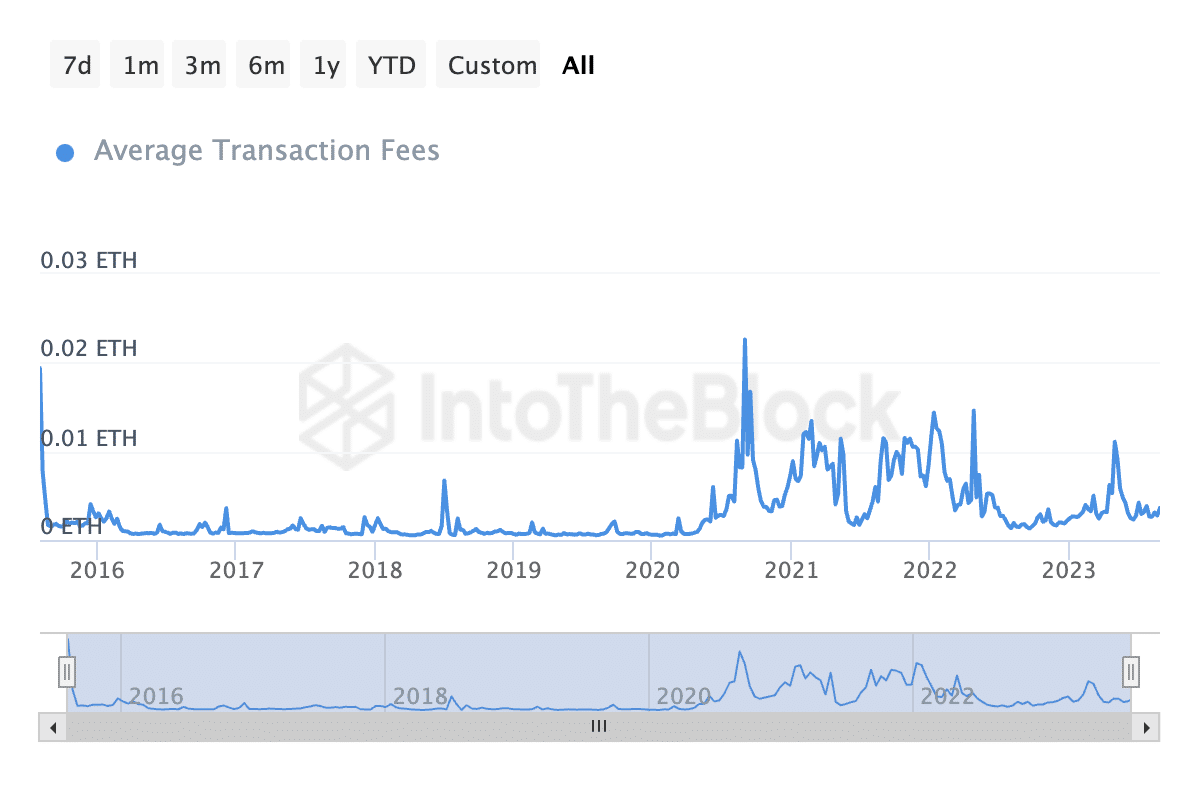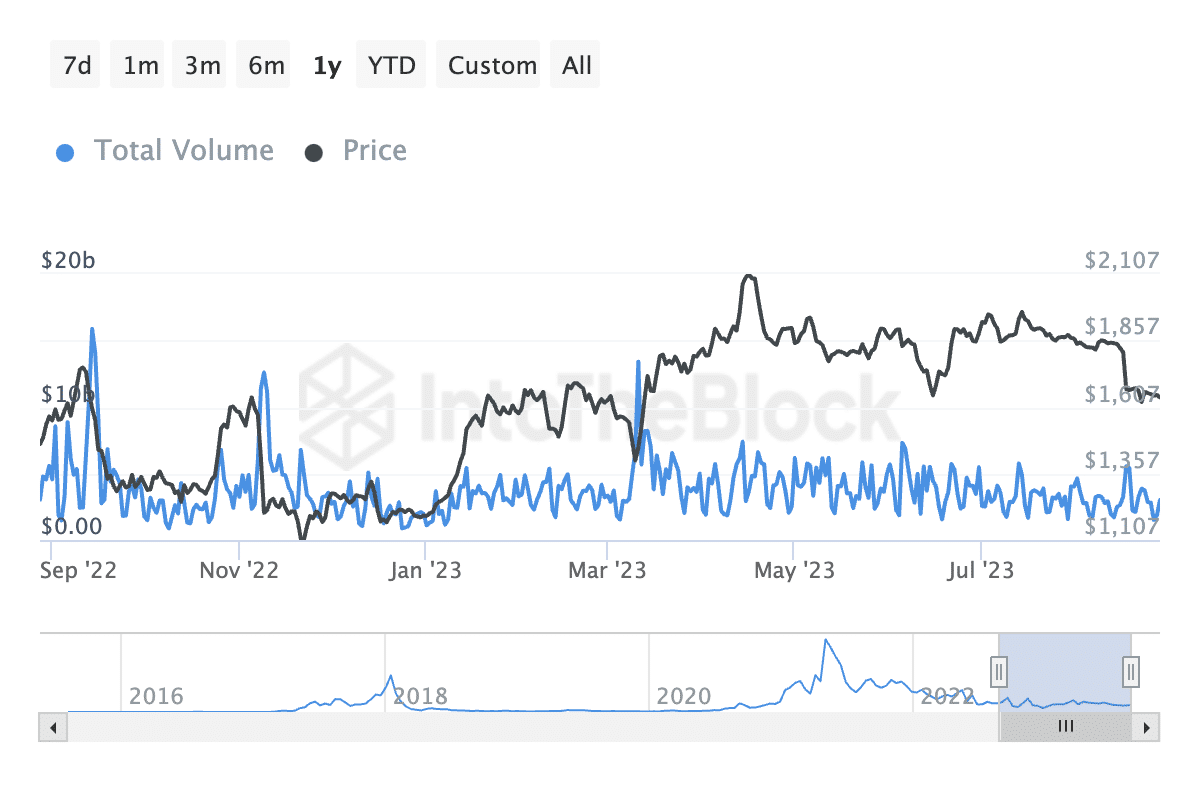- The daily total fees paid by users on Ethereum’s (ETH) Layer 1 (L1) blockchain for completing transactions experienced a six-month decline on August 27th, reaching 1,719 ETH ($2.8 million).
- The decrease in network fees on the leading L1 network is attributed to a decrease in network usage in recent months and the adoption of Layer 2 (L2) scaling solutions.
- At the time of writing this article, it was determined to be $4.69 billion and decreased by 29% after the liquidation activity. On August 23rd, due to the liquidity cleanup, ETH’s Open Positions reached its lowest level of $4.67 billion.
A decrease is observed in the daily total transaction fees paid by users on Ethereum and in Open Positions; negative situations are increasing for ETH!
Transaction Fees Paid on Ethereum are Decreasing
The daily total fees paid by users on Ethereum’s (ETH) Layer 1 (L1) blockchain for completing transactions experienced a six-month decline to 1,719 ETH ($2.8 million) according to on-chain analytics platform IntoTheBlock’s data.
This represents a 97% decrease from the all-time high of 84,000 ETH recorded on May 1st this year. During the same period, the average daily fee per transaction decreased by 70% according to IntoTheBlock’s data.
The decrease in network fees on the leading L1 network is attributed to a decrease in network usage in recent months and the adoption of Layer 2 (L2) scaling solutions. Ethereum’s daily transaction volume, which climbed to a high of $13.42 billion on March 14th, has since decreased by 78%.
As expected, the continuous decrease in network fees has led to a decrease in network revenue. According to data from Token Terminal, Ethereum’s network revenue has decreased by 22% in the last 30 days.
Decrease in ETH Futures
On August 17th, the leading cryptocurrency Bitcoin experienced its largest single-day sell-off this year and briefly traded below the $25,000 price mark. Since it has a statistically significant positive correlation, ETH has experienced a liquidity outflow from the futures market since then.
According to Coinglass data, ETH’s Open Positions have been trending downwards since then. At the time of writing this article, it was determined to be $4.69 billion and decreased by 29% after the liquidation activity. On August 23rd, due to the liquidity cleanup, ETH’s Open Positions reached its lowest level of $4.67 billion.
Significant decreases in Open Positions for an asset are generally interpreted as a negative sign for the underlying asset. This indicates that investors are closing their positions in an environment where market sensitivity is still largely downward-oriented.
While ETH is finding support at the $1600 level, it continues to trade within a narrow range at the time of writing this article, indicating that many investors are uncertain about the future price direction. With a catalyst expected, many investors prefer to mitigate further risks by closing their positions.
Investors who do not close their ETH positions after the liquidation activity are betting against the ETH price. This is clearly evident according to Coinglass, which shows negative funding rates on crypto exchanges since August 17th. This indicates significant selling pressure on ETH and suggests that it could contribute to further price declines.




